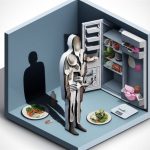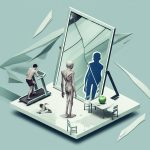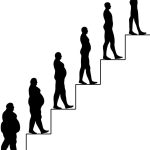Muscle relaxers offer welcome relief from painful muscle spasms and injuries. However, it’s crucial to understand their potential for addiction. This guide provides essential information about the risks associated with muscle relaxers, the signs of addiction, withdrawal management, treatment options, and safe alternatives for pain relief.
Understanding the Risks of Muscle Relaxer Addiction
While muscle relaxers can be effective for short-term pain management, some carry a risk of dependence and addiction. This risk varies depending on the specific medication. Some, like carisoprodol (Soma) and diazepam (Valium), have a higher potential for addiction due to their effects on the central nervous system, particularly their interaction with GABA receptors, which can produce a calming, and sometimes euphoric, effect. Others, like metaxalone (Skelaxin) or tizanidine (Zanaflex), are generally considered to have a lower risk, but dependence can still develop with prolonged use.
Current research suggests that the interplay of several factors contributes to muscle relaxer addiction:
- Neurotransmitter Interactions: Certain muscle relaxers, especially those affecting GABA receptors, can trigger a surge of dopamine, the “feel-good” neurotransmitter. This reinforces the desire to take the medication, potentially leading to compulsive use.
- Tolerance & Dependence: Over time, the brain may adapt to the presence of the drug, requiring higher doses to achieve the same effect (tolerance). This adaptation can also lead to physical dependence, where the body relies on the drug to function “normally.”
- Genetic Predisposition: Research suggests that genetic factors may play a role in an individual’s susceptibility to addiction, making some people more vulnerable than others.
- Co-occurring Disorders: Individuals with pre-existing mental health conditions, such as anxiety or depression, may be at increased risk of developing a muscle relaxer addiction. These medications can temporarily alleviate symptoms, making them more appealing to those struggling with these conditions.
- Environmental Factors: Stressful life events, trauma, and social pressures can also contribute to the development of addiction.
Recognizing the Signs of Muscle Relaxer Addiction
Identifying muscle relaxer addiction requires careful observation of both physical and behavioral changes. Note that these signs can vary from person to person, and the presence of some signs doesn’t definitively diagnose addiction. However, they warrant consultation with a healthcare professional.
Physical Signs
- Increased Tolerance: Needing higher doses to achieve the desired effect.
- Withdrawal Symptoms: Experiencing anxiety, tremors, insomnia, muscle aches, or even seizures when the medication is stopped or reduced.
- Changes in Sleep Patterns: Significant shifts in sleep habits, such as excessive drowsiness or insomnia.
- Physical Coordination Issues: Problems with balance, coordination, and motor skills.
- Changes in Appetite or Weight: Unexplained weight loss or gain.
Behavioral Signs
- Intense Cravings: A persistent, overwhelming desire for the medication.
- Doctor Shopping: Obtaining prescriptions from multiple doctors without disclosing this practice.
- Preoccupation with Obtaining the Medication: Spending excessive time and energy acquiring muscle relaxers.
- Neglecting Responsibilities: Failing to fulfill obligations at work, school, or home.
- Social Isolation: Withdrawing from social activities and relationships.
- Continued Use Despite Negative Consequences: Persisting in medication use despite its harmful effects on relationships, work, finances, or health.
- Changes in Mood or Personality: Becoming irritable, agitated, anxious, or depressed.
- Financial Problems: Experiencing money issues due to excessive spending on muscle relaxers.
Withdrawal Management: A Crucial Step Towards Recovery
Stopping muscle relaxers abruptly after prolonged use can lead to withdrawal symptoms, which can range from mild discomfort to severe distress. Medically supervised detox is often recommended to manage these symptoms safely and effectively. This typically involves a gradual tapering of the medication under the guidance of a healthcare professional.
Treatment Options for Muscle Relaxer Addiction
Recovery from muscle relaxer addiction is achievable with appropriate treatment. Several options are available, and the most effective approach often involves a combination of therapies tailored to individual needs.
- Medical Detox: Provides a safe and controlled environment for managing withdrawal symptoms.
- Inpatient Rehab: Offers intensive therapy and 24/7 support in a residential setting.
- Outpatient Rehab: Provides flexible treatment options for individuals who can’t take time away from work or family responsibilities.
- Therapy (Individual & Group): Helps individuals understand the underlying causes of addiction and develop healthy coping mechanisms.
- Support Groups: Offers a valuable sense of community and shared experience, reducing feelings of isolation.
- Medication-Assisted Treatment (MAT): While limited for muscle relaxer addiction, certain medications might be used to alleviate specific withdrawal symptoms or address co-occurring disorders.
It’s also important to address any underlying mental health conditions, such as anxiety or depression, that may have contributed to the addiction. Dual diagnosis treatment programs specialize in treating co-occurring disorders.
Exploring Non-Drug Alternatives for Muscle Pain
Pain management doesn’t have to rely solely on medications. Several non-pharmacological approaches can provide effective relief for muscle pain and spasms:
- Physical Therapy: Strengthens muscles, improves flexibility, and reduces pain.
- Exercise (Low-Impact): Activities like walking, swimming, or yoga can improve circulation, reduce muscle tension, and promote overall well-being.
- Relaxation Techniques: Practices like deep breathing exercises, meditation, and progressive muscle relaxation can help manage stress and reduce muscle tension.
- Mind-Body Therapies: Tai chi, yoga, and biofeedback can improve body awareness and promote relaxation.
- Hot/Cold Therapy: Applying heat or cold packs to affected areas can provide temporary pain relief.
- Massage Therapy: Can help relieve muscle tension and improve circulation.
- Dietary Changes: Reducing inflammation through dietary modifications can help manage pain. Consult a nutritionist or registered dietitian for personalized guidance.
Overdose: Recognizing the Signs and Taking Action
A muscle relaxer overdose is a medical emergency. Symptoms can include:
- Extreme drowsiness or loss of consciousness
- Slowed or shallow breathing
- Confusion and disorientation
- Slurred speech
- Weak or absent reflexes
- Seizures
If you suspect a muscle relaxer overdose, call 911 or your local emergency number immediately.
Finding Help and Support
If you or someone you know is struggling with muscle relaxer addiction, remember that help is available. Reaching out is a sign of strength, not weakness. Numerous resources can provide guidance and support:
- SAMHSA National Helpline: 1-800-662-HELP (4357)
- The National Institute on Drug Abuse (NIDA): https://www.drugabuse.gov/
- Your Primary Care Physician: Can provide referrals to specialists and treatment centers.
- Local Mental Health Clinics and Hospitals: Offer assessment, treatment, and support services.
Recovery is a journey, and it’s important to be patient with yourself or your loved one. With the right support and resources, a healthier, drug-free life is within reach.
This information is for educational purposes only and is not a substitute for professional medical advice. Always consult with a qualified healthcare provider for any health concerns or before making any decisions related to your health or treatment.
- Male Eating Disorders Often Missed but Increasingly Prevalent - October 29, 2025
- Males With Anorexia Nervosa Have Distinct Symptoms and Treatment Needs - October 28, 2025
- Weight Loss for Men Builds Habits for Lasting Success - October 27, 2025










